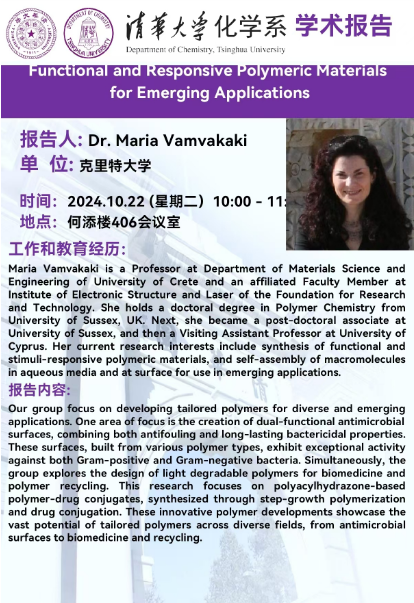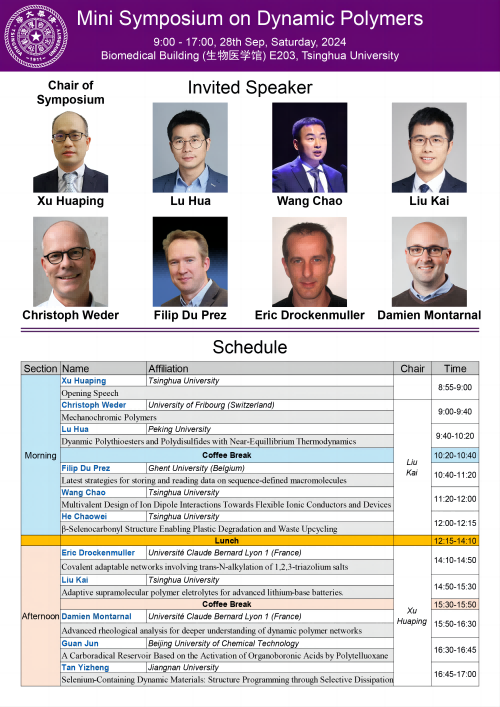Mo Zhai, Zilun Huang, Banruo Xianyu, Xiaoqiang Bai, Zhuqing Wan, Yang Fu, Huaping Xu*, Longwei Lv*, Yongsheng Zhou*
Aggregate; 2025, 0:e70074
Diabetic wound healing impairment, a common complication of diabetes, has limited clinical treatment options and poor therapeutic outcomes, causing significant physical pain and psychological burden for patients. This study aims to accelerate wound healing by modulating cellular stress responses, offering a safe and efficient new therapeutic strategy. Herein, a selenium-containing polyurethane (SePU) thermo-sensitive hydrogel was synthesized, and its...
More
Author: wanglu
An aryl radical reservoir based on the activation of organoboronic acids by polytelluroxane
Jun Guan, Ruihao Zhou, Hengxue Shi, Shenghan Zhang, Chaowei He, Muqing Cao, Lei Jiao*, Huaping Xu*
Chem Catalysis; 2025, 5, 101429
Carboradical reservoirs are non-radical precursors that controllably release stored radicals to directly participate in product formation, making them critically important in organic chemistry. However, no aryl radical reservoir has been reported to date. Here, we have constructed an aryl radical reservoir via polytelluroxane (PTeO)-mediated activation of arylboronic acids under white light. PTeO, featuring an inorganic Te–O backbone with organic side chains, f...
More
Redox-Recyclable Tellurium-Containing Polyurethane Thermosets with Spatially Tunable Strain Isolation
Jinyan Si, Chaowei He and Huaping Xu*
ACS Appl. Mater. Interfaces; 2025, 17, 37090
Strain isolation strategies are widely employed in flexible electronic device fabrication to enhance their stretchability. One common approach involves modulating the cross-linking degree of the materials to create regions with a heterogeneous modulus. However, existing materials typically rely on permanent cross-linking networks, which restrict their recyclability and environmental degradability. In this study, we introduce a recyclable thermosetting tellurium-containing polyurethane (TeHPU) as a substrate ...
More
Polymer Materials Synthesized in Living Cells for Regulating Biological Functions
Chengfei Liu, Yifan Jin, Jiahui Ma, Wei Tian*, Huaping Xu*
Chinese J. Polym. Sci.; 2025, 10.1007/s10118-025-3341-7
Intracellular polymerization is an emerging field, showcasing high diversity and efficiency of chemistry. Motivated by the principles of natural biomolecular synthesis, polymerization within living cells is believed to be a powerful and versatile tool to modulate cell behavior. In this review, we summarized recent advances and future trends in the field of intracellular polymerization, specifically focusing on covalent and supramolecular polymerization. This discussion comprehen...
More
Prof. Huaping Xu attended ACS Spring 2025 as plenary spearker

Prof. Huaping Xu was invited to deliver a plenary lecture on Polymers for Biomedical Applications as part of the ACS Meetings Global Virtual Symposia (GVS) Spring 2025 session, held in March 2025.
More
Functional Heteroatom Substituted Hyperbranched Polymers: Recent Developments and Perspectives
Yuanbo Zhang, Chaowei He, Huaping Xu*
ACS Appl. Mater. Interfaces; 2025, 17, 13324
Heteroatom-substituted hyperbranched polymers (HBPs) have emerged as a versatile class of functional materials, combining the structural merits of hyperbranched architectures with the unique chemical functionalities imparted by heteroatoms such as boron, silicon, phosphorus, sulfur, selenium, and tellurium. These polymers exhibit distinct physicochemical properties, including low viscosity, excellent solubility, high chemical reactivity, and tunable functionality, which position them as promising candidates ...
More
Scholarships and prizes of Xu’s group in 2024
Happy New Year!
Prof. Maria Vamvakaki visited Tsinghua University and gave a lecture

On October 22th, 2024, Prof. Maria Vamvakaki from the University of Crete visited Tsinghua University and delivered a lecture on her research.
Prof. Maria Vamvakaki is a professor at Department of Materials Science and Engineering of University of Crete and an affiliated Faculty Member at Institute of Electronic Structure and Laser of the Foundation for Research and Technology. She holds a doctoral degree in Polymer Chemistry from University of Sussex, UK. Next, she became a post-doctoral associate at University of Sussex, and then a Visiting Assistant Professor at University of Cyprus. Her c...
More
Mini Symposium on Dynamic Polymers

On 28th Sep, our group organized a mini symposium on dynamic polymers at Biomedical Building E203 in Tsinghua University, with many famous professors invited. The content of the symposium is as follows:
The discuss atmosphere of the symposium was very hot, the professors and students exchanged their minds passionately. More photos can be seen in GALLERY.
More


